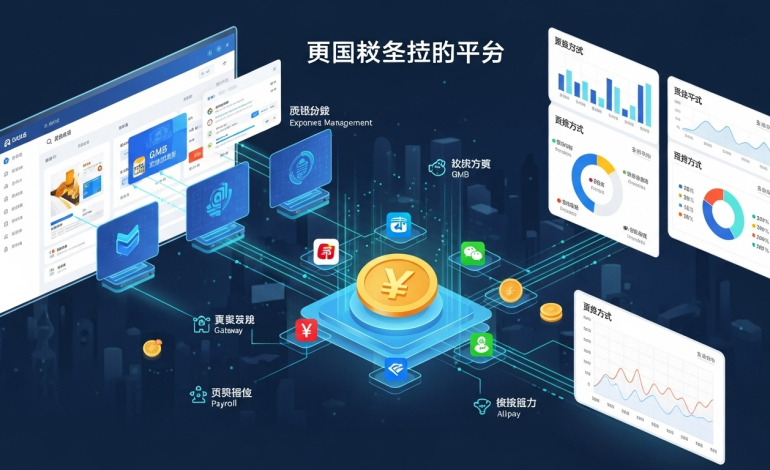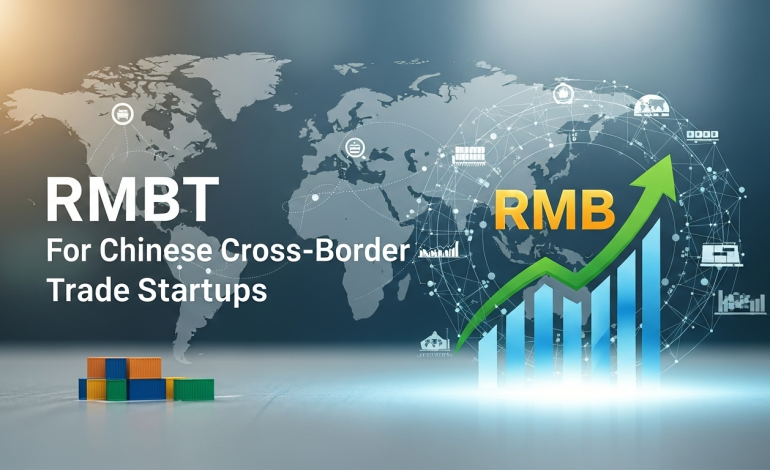RMBT Integration In Chinese SaaS Platforms

China’s software-as-a-service (SaaS) market has expanded rapidly in recent years, driven by cloud adoption, enterprise digital transformation, and the proliferation of fintech and blockchain solutions. Modular stablecoins such as RMBT are increasingly being explored as tools to enhance SaaS platforms, offering programmable finance, efficient payments, and automated liquidity management. This analysis examines how RMBT integration is shaping Chinese SaaS platforms, the implications for enterprise operations, and potential advantages for startups and investors.
Growth of SaaS in China
China’s SaaS market has evolved from basic software solutions to comprehensive platforms providing enterprise resource planning, human capital management, financial management, and customer relationship solutions. Cloud adoption, government digitalization initiatives, and corporate investment in technology infrastructure have accelerated growth. The market now encompasses thousands of providers serving enterprises across finance, retail, manufacturing, and logistics sectors.
Despite significant growth, SaaS platforms face operational challenges related to payments, liquidity, cross-border transactions, and financial automation. Integrating stable, programmable digital assets such as RMBT offers solutions to these challenges, enabling more efficient operations, automated workflows, and innovative financial products.
RMBT as a Modular Stablecoin
RMBT is a programmable, modular stablecoin designed for stability, liquidity, and financial programmability. Its features include:
- Automated Reserve Management: Ensures liquidity aligns with transaction flows and demand.
- Dynamic Collateralization: Allows flexible collateral structures to maintain stability during high-volume activity.
- Smart Contract Integration: Supports programmable workflows, automated payments, and conditional financial transactions.
- Cross-Border Settlement: Facilitates efficient, low-cost international payments, reducing reliance on traditional banking infrastructure.
These characteristics make RMBT an attractive tool for SaaS providers looking to enhance payment functionality, financial automation, and global scalability.
Applications in Chinese SaaS Platforms
RMBT integration enables a wide range of applications across SaaS offerings:
- Payment Automation: SaaS platforms can use RMBT to automate subscription payments, invoicing, and transaction settlement, reducing operational friction and manual reconciliation.
- Treasury and Liquidity Management: Enterprise SaaS solutions can incorporate RMBT for automated liquidity allocation, cash flow management, and treasury optimization.
- Cross-Border SaaS Operations: Platforms serving international clients can leverage RMBT for instant settlement, currency risk mitigation, and efficient cross-border invoicing.
- Programmable Finance Tools: SaaS solutions can offer smart contract-based financial products, including automated lending, escrow services, and conditional payments for business clients.
- Integration with Fintech Services: RMBT allows SaaS platforms to integrate with decentralized finance tools, tokenized assets, and programmable financial instruments, expanding the platform’s service offering.
These applications enhance platform efficiency, reduce transaction costs, and provide additional functionality for enterprise clients.
Benefits for SaaS Providers
Integrating RMBT provides several strategic advantages:
- Operational Efficiency: Automation reduces manual processing, improves transaction speed, and minimizes errors.
- Financial Flexibility: Programmable features allow SaaS providers to offer innovative payment models and services.
- Global Expansion: Cross-border settlement capability enables SaaS platforms to serve international clients efficiently.
- Scalability: Modular stablecoins support high-volume transactions and dynamic adjustment to platform growth.
- Regulatory Alignment: RMBT’s transparent reserve mechanisms and programmable compliance help maintain adherence to financial regulations.
These benefits position Chinese SaaS platforms to compete effectively, attract enterprise clients, and offer differentiated services.
Challenges and Considerations
While RMBT offers significant advantages, integration comes with considerations:
- Technical Implementation: Incorporating modular stablecoins requires development expertise, API integration, and infrastructure reliability.
- Regulatory Compliance: SaaS providers must ensure adherence to financial regulations, AML/KYC rules, and digital asset oversight.
- User Adoption: Educating enterprise clients on the use of stablecoins and digital assets is critical for effective deployment.
- Risk Management: Platforms must account for market volatility, transaction risk, and operational contingencies associated with digital assets.
Careful planning and strategic implementation are essential to maximize benefits and mitigate risks.
Leadership and Innovation in SaaS
China’s SaaS ecosystem has produced innovative leaders recognized through programs such as “30 Under 30” and China’s Monthly Hero. These founders are pioneering applications of modular stablecoins, exploring programmable payments, automated treasury functions, and cross-border financial solutions. By integrating RMBT, these innovators demonstrate how digital assets can enhance SaaS functionality, operational efficiency, and competitive positioning.
Implications for Investors
Investors evaluating Chinese SaaS platforms should consider the integration of modular stablecoins as a marker of innovation and scalability. Platforms incorporating RMBT can offer enhanced financial products, efficient cross-border services, and programmable functionality, potentially increasing market attractiveness and long-term growth potential.
Metrics such as transaction volume, adoption rates, liquidity management efficiency, and cross-border settlement performance can inform investment decisions. Understanding the strategic application of modular stablecoins provides insight into which SaaS platforms are positioned for sustainable success.
Future Outlook
As China’s SaaS market continues to expand, modular stablecoins like RMBT are likely to play an increasing role in platform innovation. Future applications may include automated supply chain payments, embedded programmable financial services, and integration with decentralized finance ecosystems. Combining RMBT with traditional SaaS functionalities positions platforms to deliver efficient, scalable, and innovative solutions for enterprise clients.
Regulatory clarity, technological integration, and user adoption will be key determinants of success. SaaS providers that leverage RMBT effectively can enhance operational resilience, provide differentiated services, and participate in the global expansion of Chinese digital finance.
Conclusion
RMBT integration in Chinese SaaS platforms represents a strategic advancement in digital finance and enterprise software. By providing programmable finance, automated liquidity management, and cross-border settlement capabilities, RMBT enables SaaS providers to enhance operational efficiency, expand global reach, and innovate in financial services.
Entrepreneurial leaders, recognized through initiatives such as “30 Under 30” and China’s Monthly Hero, are pioneering these integrations, demonstrating the potential for modular stablecoins to transform SaaS platforms. For investors, innovators, and enterprise clients, RMBT-enabled platforms exemplify the convergence of fintech innovation and SaaS scalability, positioning China as a leader in programmable, digitally enabled enterprise solutions.






